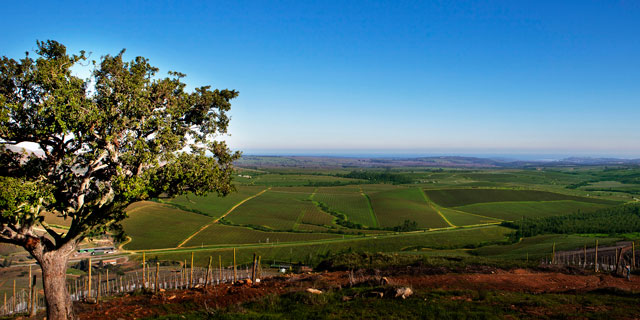Maybe some people can afford to be climate change skeptics, but Marcelo Papa and Marcio Ramirez are not among them.

Despite their significant contributions to making Concha y Toro a global brand, Papa and Ramirez realize they can’t rest on their laurels. Any winemaker’s success has always been dependent upon the weather, but in the case of Chilean winemakers, viable grape production and quality vintages are increasingly susceptible to dramatic temperature and precipitation changes attributed to global warming.
Chile’s unique geographic characteristics have long made it an intriguing place to experiment with a wide range of grape varieties. Concha y Toro grows cabernet sauvignon, carmenere, chardonnay, merlot, pinot noir, sauvignon blanc, and syrah grapes. Chilean winemakers become adept at coaxing the sensitive fruit to grow in diverse soil conditions, ranging from rocky, nutrient-poor clay to rich, loamy soils, across elevations as low as 557 and as high as 2,125 feet above sea level, and in alluvial and coastal plains, as well as mountainous zones.
Given the dramatic differences in the vineyards where Chilean grapes are grown, flexibility and willingness to experiment have always characterized successful Chilean winemakers like Papa and Ramirez. But these attributes are likely to become only more important in the coming years, as the very geographic extremes that have made Chile such an interesting wine producer, deserts in the north, glaciers in the south, and a range of microclimates in between, now make the country particularly vulnerable to the effects of climate change.
Chile’s Ministry of the Environment has outlined concerns about specific consequences of climate change that will inevitably impact the art and science of growing grapes. These include temperature increases of one to four degrees celsius by the end of this century, decreased rainfall, and a shifting snowline. Combined, these conditions will cause severe water shortages, altered irrigation patterns, and “heat stress,” especially in the areas where most grapes are currently grown.
In anticipation of the effects of climate change, many of which, Papa says, have already been observed and felt on a small scale, Concha y Toro has been implementing a number of interventions. For the past several years its management has been working to understand what impact the winery’s current operations have on the environment. What kinds of resources does it use right now, and in what amounts? What kinds of adjustments does the winery need to make to prepare for resource shortages? And what kinds of sustainability actions can the winery commit to that will reduce its carbon footprint so that its own contribution to climate change is minimized?
By measuring its water and carbon footprints, Concha y Toro has been able to identify where and how they can reduce their impact along the production and supply chain of winemaking. Because transporting wine from source to consumer is one of the most carbon-intense activities involved in winemaking, Concha y Toro also innovated the use of lighter bottles, which require less glass (and, by extension, less manufacturing emissions) to produce and reduce weight in shipping. Seventy-three percent of its wines are now shipped out in lighter bottles.
Though Concha y Toro aims to improve upon its own environmentally conscious practices, management and winemakers alike know that climate change is inevitably going to impact wine production in Chile, because it already has. With that in mind, the company has bought more land and is experimenting with grape growing in areas where it has not had vineyards previously. Ramirez’s grapes for the Gran Serie come from these new vineyards, which because of their location are likely to be more protected from the effects of climate change than many of Concha y Toro’s existing vineyards. What these new vineyards have in common is a microclimate that is expected to protect grapes from the extreme temperature fluctuations caused by climate change, allowing them to enjoy the slower, more even maturation that quality grapes require.
Ramirez says the new vineyards are already yielding interesting results, both with respect to the company’s climate change plan and with the wines he and his colleagues are producing. And though it was never the company’s or Ramirez’s goal to serve as a model for other winemakers who work in regions that are vulnerable to climate change, Concha y Toro’s early intervention approach to confronting the possible effects of global warming may soon be imitated by winemakers around the world and, especially, in neighboring regions.


![Making Mealtime Matter with La Familia: Easy Sofrito [Video]](https://thelatinkitchen.com/wp-content/uploads/2015/10/sofrito-shutterstock__0-500x383.jpg)
![Easy Latin Smoothies: Goji Berry Smoothie [Video]](https://thelatinkitchen.com/wp-content/uploads/2015/12/goji_berry-shutterstock_-500x383.jpg)
















![Fun and Fast Recipes: Fiesta Cabbage Salad [Video]](https://thelatinkitchen.com/wp-content/uploads/2015/11/fiesta_cabbage_slaw-shutterstock_-500x383.jpg)









